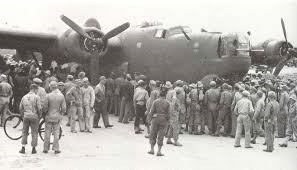In the years getting ready for World War II, the United States had not presently become the world’s driving superpower. Truly, it was well down on the quick overview of military forces. In 1939, the US Army, with the strength of 174,000, was nineteenth in the rankings of ground powers. That put it, as demonstrated by an understudy of history Eric Larrabee, “before Bulgaria at any rate behind Portugal.”
The Army Air Corps was assessed fairly higher—maybe fourth or fifth in the general standings of flying powers—in any case that was insufficiently considering the path that there was less flight-based military than military. In 1939, the Air Corps had a staff strength of just 26,000. It had around 1,200 planes and advocates, an immense segment of the old. Open-cockpit planes were then flying in operational units.
Eddie Rickenbacker, America’s “Lord of Aces” from World War I, said the United States was 10 years behind Germany in the improvement of military flight. The Luftwaffe in 1939 had 4,100 first-line battle planes. US pursuit planes were no accomplice for the Messerschmitt Bf-109. The Ju-87 Stuka was superior to the standard American assault plane. In addition, the British Hurricane and Spitfire were better than the best American warriors, similar to the Japanese A6M Zero.
The lone edge the Army Air Corps could guarantee was the four-motor B-17 plane, yet there were just 23 of them. The earlier year, Secretary of War Harry H. Woodring had dropped the organized creation of more B-17s for 1939 in light of the fact that they cost extravagantly and were not required.
The US Navy fared broadly better stood out from different associations in the interwar years. The country relied on the Navy as its first line of safeguard, and the maritime power arranged with the best and best on earth.
Regardless, times were changing in 1939. The Second Great War had started in Europe, and clearly, airpower would be of fundamental significance to the result. The United States was quickly losing trust in unprejudiced nature, which had overwhelmed its new and protection approaches for a genuinely long time. Openings for the US avoiding the conflict were decreasing.
Rearmament had started. Congress supported up to 6,000 planes for the Air Corps yet that objective was pointlessly eager for the arising US creation ability to satisfy whenever in the near future. There was far to go.
Fortuitously, inferable from some blessed advances taken during the 1930s, the United States and the Army Air Corps were more set up than they looked. Mix-ups by the adversary helped, as well.
Exactly when the US entered the dispute in 1941, the system for progression was set up. A few years, the Army Air Forces would jump to a summit strength of 2.4 million individuals and 80,000 planes, obviously the best flying corps on earth.
Balance and Isolationism:
The United States had a long custom of partition, returning to the soonest days of the republic. President Woodrow Wilson was reappointed in 1916 on the adage, “He kept us out of war.” The US entered World War I late, and with incomprehensible hesitance.
After 1919, the US technique was to stay away from coalitions and clashes abroad and depend upon the sea squares to fight new disturbs off. Some chance of contention with Japan was seen, yet that hazard was decided to be fundamentally ocean and the US Navy was acknowledged arranged for managing it.
During the 1930s, driving overseers of the two players were intensely free. President Roosevelt was before the country on the need to get ready for war, yet he was unable to take that position straightforwardly or plainly. It was apparently always before he could straightforwardly cut his binds with the absence of predisposition. “I have said this as of now, yet I will say it over and over,” Roosevelt said in a mission talk in October 1940. ”
Military decays had started rapidly when World War I wrapped up. Nine months after the ceasefire, the Army had grounded practically 3,250,000 champions. The Army Air Service was scaled back by in excess of 95%. Its grit in 1920 was 9,596, down from a wartime high of 197,338. Security money-related plans drove forward further in the overall thriftiness of the Coolidge Administration and a brief timeframe later dropped again effectively in the Great Depression.
Some spots in the extent of 1934 and 1936, a Senate weapons request kept an eye on in excess of 200 observers, in any case, could discover no check that weapons providers caused the dispute. The manager of the examining gathering, Sen. Gerald P. Nye (R-N.D.), at last apparent that the confirmation “doesn’t show that wars have been begun exclusively on account of the exercises of weapons producers and their representatives.” Even likewise, a prominent tendency against the fight gear industry proceeded. A development of Neutrality Acts some spot in the extent of 1935 and 1939 restricted US relationship in new battles and defeated shipment of war materials to belligerents.


